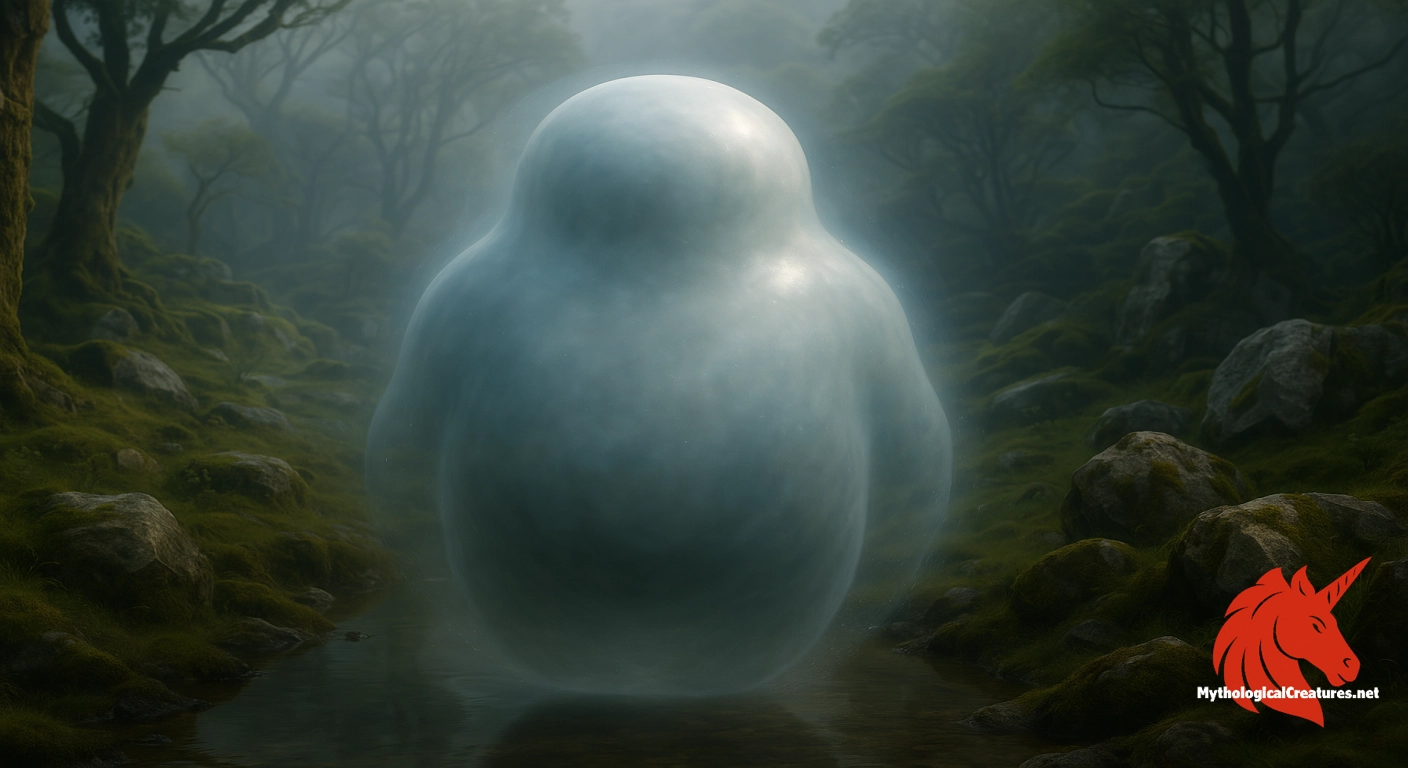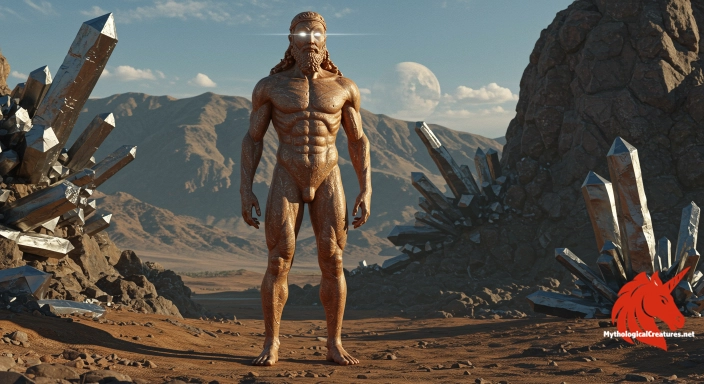Hundun: Hundun is a legendary faceless entity from Chinese cosmogony, symbolising the primordial state of chaos.

Hundun
Hundun - Represents the undifferentiated primordial state preceding cosmic creation; central to discussions on chaos and order in Chinese mythology.
Origins & First Encounters
Hundun emerges from the rich tapestry of Chinese mythology as a being whose very name evokes the state of muddled confusion that marked the universe before order took hold. Its origins lie deep in ancient cosmogonical traditions where it symbolised the formless chaos preceding creation. In these early narratives, Hundun is not merely a creature but an embodiment of primordial potential, capturing an era when the cosmos was an undifferentiated mass. Over the centuries, its image evolved as a metaphor for the boundless, unstructured energy that fuels change and transformation. The figure has remained central to debates on the nature of existence, portrayed as a force that blurs the boundaries between presence and absence. Its faceless nature challenges the human tendency to impose structure, inviting contemplation about the very essence of being. In the cultural context of early Taoist thought, Hundun encapsulated the duality of creative disorder and the subsequent emergence of harmony. Even as interpretations have diversified, the legend of Hundun continues to be a powerful symbol of the eternal interplay between chaos and order.
Source Texts & Tale Variants
Ancient texts and philosophical works provide the scattered references that have come to shape the myth of Hundun. Early pre-Qin literature alludes to this enigmatic figure, employing it as a metaphor to explain the origin of the cosmos through an abstract lens. Various accounts present distinct narrative variants, some depicting Hundun as a formless essence while others imbue it with nuanced intentionality. In the fluid realm of Taoist philosophy, the creature arises in allegorical passages that stress the complex interplay between chaos and structure. These foundational texts have been reinterpreted across generations, each adding layers of meaning to its character. Folk traditions also offer alternative perspectives, sometimes reimagining Hundun as a trickster-like spirit or a benevolent force that operates beyond human control. Over time, this multiplicity of sources contributed to a mosaic of interpretations that underscore its symbolic versatility. The evolution of these narratives mirrors the broader transformation of myth, as cultural and philosophical shifts continuously reshape ancient stories into vibrant, fluid allegories.
Form & Powers
The physical depictions of Hundun are as elusive as the concept it represents, often described as a formless, amorphous mass devoid of any conventional features. Its defining characteristic is the complete absence of a face, an attribute that accentuates its role as a symbol of undifferentiated chaos. Visual representations sometimes depict it as a shifting, nebulous entity with contours that seem to melt into the surrounding void. The lack of distinct anatomical details, such as eyes, a nose, or a mouth, reinforces the idea that Hundun transcends ordinary physical limitations. Some traditional portrayals include subtle hints of texture and movement, suggesting a dynamic interplay between light and shadow within its indistinct form. The variability in artistic renditions is notable; while certain accounts describe it as a vast, universe-encompassing presence, others hint at a more confined but potent energy. This rich array of imagery emphasises the flexible and ambiguous nature of its representation. Every portrayal, intentionally minimalist, invites viewers to perceive Hundun as not merely a myth but as an ever-evolving emblem of primordial mystery.
Regional Faces
Across different regions of China, the myth of Hundun has absorbed unique local flavours, reflecting the diversity of cultural interpretations. In the more urbanised centres, narratives tend to underscore its abstract role in the cosmic drama, focusing on its philosophical symbolism rather than concrete physical features. Rural communities, on the other hand, have sometimes reinterpreted Hundun as a playful yet unpredictable spirit, emblematic of the natural world's inexplicable quirks. In areas with strong Taoist traditions, the figure is revered as a central pillar in the cosmic order, bridging the gap between chaos and creative energy. These regional adaptations often integrate local customs, with certain storytellers assigning attributes that reflect indigenous beliefs and environmental influences. The divergent portrayals highlight how Hundun’s myth can be moulded to resonate with the surrounding landscape and societal values. In border areas where cultures mingle, syncretic influences further enrich the narrative, merging elements from neighbouring folklore. Ultimately, the variations demonstrate how a single mythological figure can serve as a cultural mirror, reflecting the multifaceted worldviews of diverse communities.
Cultural Parallels
The myth of Hundun finds intriguing parallels in a variety of global traditions, each exploring the theme of primordial chaos in its own cultural context. Much like the Greek notion of Chaos—the formless void preceding the ordered universe—Hundun captures the essence of a state unbound by structure. The world egg motif, prevalent in many cosmologies, echoes in Hundun’s representation, where the primordial mass contains the potential for all creation. Similarly, the Norse concept of Ginnungagap, a yawning expanse between realms, reflects a shared human fascination with the origin of order from disorder. These cross-cultural comparisons underscore a universal symbolic language in which chaos is revered not only as a force of destruction but as a fertile ground for genesis. Unlike some traditions that portray chaos in starkly negative terms, Hundun's faceless form is celebrated as a paradox—both a void and the crucible for creation. This broader tapestry of myth demonstrates the enduring human need to explain the mysteries of existence through allegorical figures. In comparative analysis, Hundun stands as a bridge across civilizations, inviting contemplation on how diverse cultures interpret the space between nothingness and totality.
Legacy & Modern Evolution
The evolution of Hundun from an abstract mythological symbol to a modern cultural icon mirrors the dynamic nature of myth-making itself. Early depictions in ancient texts served a primarily philosophical purpose, symbolising the chaotic potential from which the ordered world emerged. As centuries passed, the figure of Hundun found new life in artistic and literary expressions, often serving as a metaphor for the unpredictable forces of change. During the imperial era, its enigmatic qualities were woven into narratives that explored the balance between cosmic order and creative disarray. Contemporary reinterpretations have embraced Hundun as a symbol of the ever-relevant tension between structure and spontaneity, influencing modern art, literature, and even digital media. Modern artists and storytellers frequently reimagine the creature to reflect current existential themes, using its faceless image to challenge conventional ideas about identity and form. The legacy of Hundun is not static; it evolves with each retelling, acquiring fresh layers of meaning as society's collective consciousness shifts. Today, its motif can be seen in diverse formats ranging from abstract paintings to narrative films, embodying both a timeless mystery and a contemporary commentary on chaos. Hundun endures as a reminder of the inherent complexity of existence, resonating with audiences who perceive the beauty in the uncertain and the unformed.
Interesting Fact
Hundun's faceless design has not only defined its mythological significance but also sparked ongoing debates among scholars regarding the nature of chaos and the human tendency to seek order in the universe.
Quick Creature Info
Associations:
Our Mythic Legendary Rating:

Also Sometimes Known As:
Habitat:
Supernatural Powers:
Physical Attributes:
Abilities:
Behavior:
Lore:
References
Discover Another Mythical Legend You May Not Have Heard Of?
Uncover the mysteries of ancient folklore and expand your knowledge of legendary beings from cultures around the world.
Dare to Meet the Kshatra Vairya....
Mythical Disclaimer: The images and data on this site are derived from various historical and literary sources, but we have found that many myths often have multiple versions and interpretations across references, sometimes contradictory. As a result, these creature depictions are artistic interpretations—imaginative blends of folklore, legend, and a dash of AI guesswork. Because creature descriptions vary widely, our illustrations and accompanying information represent our best effort to honor mythology while bridging creative gaps. Enjoy these interpretations—just remember, we've done our best to respect the stories and validate available data, but in the realm of mythology, details often shift, imagination leads the way, and nothing is ever set in stone!
Curated by the Mythological Creatures Team (rev. May 2025)
